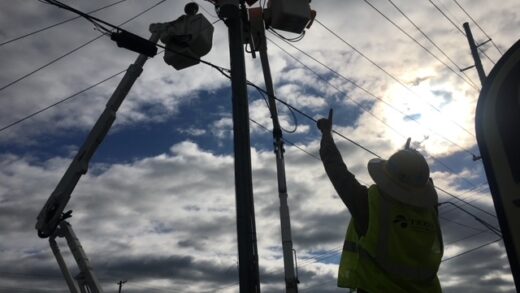In an era where technology is rapidly evolving, the concept of a smart home is becoming more than just a futuristic dream. The integration of Internet of Things (IoT) devices into our living spaces is transforming how we interact with our environment, making our homes more efficient, secure, and convenient. This article will explore how you can make your home smarter with IoT devices, offering a comprehensive guide to enhance your living experience.
What is IoT?
The Internet of Things (IoT) refers to the network of physical objects embedded with sensors, software, and other technologies to connect and exchange data with other devices and systems over the internet. These devices range from ordinary household items to sophisticated industrial tools, all working together to create a seamless and interconnected environment.
Benefits of a Smart Home
1. Convenience
One of the most significant advantages of a smart home is the convenience it offers. IoT devices allow you to control various aspects of your home remotely, whether it’s adjusting the thermostat, turning off lights, or monitoring security cameras. This level of control can be accessed through a smartphone app, providing ease and flexibility in managing your home.
2. Energy Efficiency
Smart home devices can help you reduce energy consumption and lower utility bills. Smart thermostats, for example, learn your schedule and preferences, automatically adjusting the temperature for optimal energy use. Similarly, smart lighting systems can turn off lights in unoccupied rooms, and smart plugs can cut power to devices that are not in use.
3. Enhanced Security
Home security is another area where IoT devices shine. Smart locks, cameras, and alarm systems can be monitored and controlled remotely, providing real-time alerts and peace of mind. You can check who is at your door, receive notifications of suspicious activity, and even lock your doors from anywhere in the world.
4. Improved Comfort
IoT devices can enhance the comfort of your living environment. Smart speakers and home assistants can play your favorite music, answer questions, and control other smart devices with voice commands. Automated lighting and climate control systems ensure that your home is always at the perfect temperature and lighting level.
5. Health and Wellness
IoT devices can also contribute to your health and wellness. Smart air purifiers, humidifiers, and even fitness trackers can monitor and improve the quality of your indoor environment and your physical well-being.
Essential IoT Devices for a Smart Home
1. Smart Thermostats
A smart thermostat is an essential device for any smart home. It learns your heating and cooling preferences and adjusts the temperature automatically. Popular options include the Nest Learning Thermostat and the Ecobee smart thermostat.
2. Smart Lighting
Smart lighting systems allow you to control your lights remotely and set schedules. Philips Hue and LIFX offer a wide range of smart bulbs and lighting fixtures that can be controlled via smartphone apps or voice assistants like Amazon Alexa and Google Assistant.
3. Smart Security Systems
Smart security systems provide comprehensive protection for your home. Options like the Ring Video Doorbell, Arlo Pro security cameras, and the August Smart Lock Pro offer remote monitoring, real-time alerts, and enhanced security features.
4. Smart Plugs
Smart plugs turn any ordinary appliance into a smart device. They allow you to control power to your devices remotely, set schedules, and monitor energy usage. Popular smart plugs include the TP-Link Kasa Smart Plug and the Wemo Mini Smart Plug.
5. Smart Speakers and Assistants
Smart speakers and home assistants, such as the Amazon Echo and Google Nest Hub, serve as the central hub for your smart home. They can control other IoT devices, play music, provide news updates, and answer questions through voice commands.
6. Smart Appliances
Many household appliances now come with smart features. Smart refrigerators, washing machines, and ovens can be controlled remotely, provide maintenance alerts, and even suggest recipes based on the contents of your fridge.
Setting Up Your Smart Home
Step 1: Plan Your Smart Home
Before purchasing any devices, it’s essential to plan your smart home setup. Determine which areas of your home you want to automate and what specific needs you have. Consider your budget and prioritize the devices that will offer the most significant benefits.
Step 2: Choose a Hub
A smart home hub is a device that connects and controls your IoT devices. Some popular hubs include the Amazon Echo, Google Nest Hub, and Samsung SmartThings Hub. Choose a hub that is compatible with the devices you plan to use.
Step 3: Install Devices
Once you have your hub and devices, follow the manufacturer’s instructions for installation. Most smart devices are designed for easy setup and can be installed without professional help. Ensure that all devices are connected to your Wi-Fi network and paired with your hub.
Step 4: Customize Settings
After installation, customize the settings for each device through the corresponding app. Set schedules, create automation routines, and adjust preferences to suit your lifestyle. For example, you can set your lights to turn on automatically when you arrive home or have your thermostat lower the temperature at night.
Step 5: Monitor and Maintain
Regularly monitor your smart home devices to ensure they are functioning correctly. Keep firmware and software updated to benefit from the latest features and security improvements. Periodically check energy usage and make adjustments to optimize efficiency.

Future of Smart Homes
The future of smart homes is incredibly promising, with advancements in AI and machine learning driving innovation. Here are some trends to watch:
1. Increased Interconnectivity
As more devices become IoT-enabled, the level of interconnectivity will increase. This means more seamless integration and communication between devices, creating a more cohesive smart home experience.
2. Enhanced AI Capabilities
Artificial intelligence will play a more significant role in smart homes, with devices becoming smarter and more intuitive. AI-powered assistants will better understand and predict your needs, offering personalized recommendations and automation.
3. Improved Security
With the rise of Smart Home Singapore technology, security measures will also advance. Enhanced encryption, biometric authentication, and more sophisticated monitoring systems will protect your home and data from cyber threats.
4. Sustainable Living
IoT devices will continue to contribute to sustainable living by reducing energy consumption and promoting eco-friendly practices. Smart homes will be designed with sustainability in mind, incorporating renewable energy sources and efficient resource management.
Conclusion
Transforming your home into a smart home with IoT devices offers numerous benefits, from increased convenience and security to energy efficiency and enhanced comfort. By carefully planning your setup, choosing the right devices, and staying updated with the latest advancements, you can create a living space that adapts to your needs and improves your quality of life.










